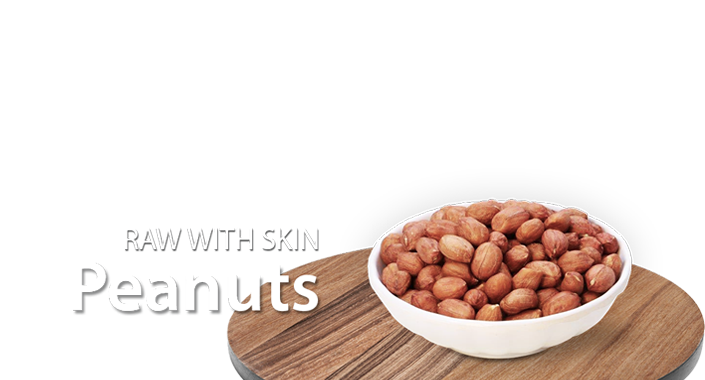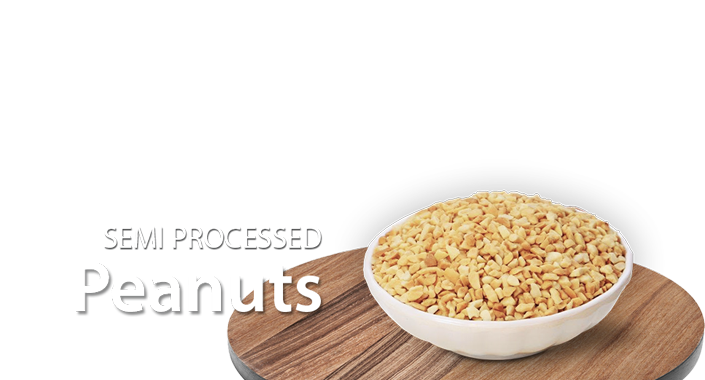











| PRODUCT | ||||
|---|---|---|---|---|
| Name | Roaste Peanut Flour (standard color) | |||
| Description | Roasted Peanut Flour, a product originating from the Runner nature, starting from the calendars 38/42, 40/50, 50/60 and halves, granulation test and classification. | |||
| Composition | Peanut | |||
| ORGANIC ANALYSIS | ||||
| Limits | ||||
| Parameter | Method | Minimum | Maximum | Unit |
| Acidity (% oleic acid) | IT-CQ 02 | - | 1,5 | % |
| Peroxide Index | IT-CQ 06 | - | 2,0 | mEq 02/kg |
| Humidity | IT-CQ 03 | - | 2,5 | % |
| MYCOTOXIN | ||||
| Limits | ||||
| Parameter | Method | Minimum | Maximum | Unit |
| Aflatoxine | IT-CQ 21 (AOAC Official Method 997,31) | - | 20 | PPB |
| COLOR ANALYSIS | ||||
| Limits | ||||
| Parameter | Method | Minimum | Maximum | Unit |
| L | Analysis performed with Konica Minolta | 58 | 63 | - |
| GRANULOMETRY ANALYSIS | ||||
| Limits | ||||
| Parameter | Minimum | Maximum | Unit | |
| Above the sieve 2,36mm | - | 5,0 | % | |
| Bottom | 95,0 | - | % | |
| SENSORY ANALYSIS | ||||
| Parameter | Method | Limits | Unit | |
| Appearance | IT-CQ 28 | Caract. | - | |
| Flavor | IT-CQ 28 | Caract. | - | |
| Color | IT-CQ 28 | Caract. | - | |
| Odor | IT-CQ 28 | Caract. | - | |
| MICROBIOLOGICAL ANALYSIS | ||||
| Tolerance for sample | Tolerance for sample | |||
| Parameter | Minimum | Maximum | ||
| Salmonella sp/25g | Absent | Absent | ||
| Coliformes a 45°C/g | 10³ | - | 10³ | |
| Second Resolution - RDC Nº. 12 of January 2, 2001, of the National Health Surveillance Agency of the Ministry of Health. Note: Analyses carried out by customer request. | ||||
| HEAVY METALS * | ||||
| Limits | ||||
| Parameter | Unit | Minimum | Maximum | |
| Lead | ppm | - | 0,2 | |
| Copper | ppm | - | <10 | |
| Arsenic | ppm | - | <0,1 | |
| Cadmium | ppm | - | <0,1 | |
| Second Resolution - RDC Nº 42, of 29/08/2013 - Vegetables (dried seeds of legumes) except soy. Ordinance No. 685, 8/27/1998 - Fresh, industrialized fruits, vegetables and oilseeds. | ||||
| NUTRITIONAL INFORMATION * | ||||
| Unit | Results | |||
| Carbohydrates | % | 14,6 | ||
| Energetic value | Kcal/100g | 606 | ||
| Proteins % | % | 24,12 | ||
| Total Fat | % | 50,19 | ||
| Ash Content | % | 2,0 | ||
| Saturated Fat | % | 3,72 | ||
| Monounsaturated Fats | % | 93,53 | ||
| Polyunsaturated Fats | % | 2,75 | ||
| Trans Fats | % | <0,01 | ||
| Food Fiber | % | 8,0 | ||
| Sodium | Mg/kg | <5,0 | ||
| Humidity and Volatile Material | % | 1,12 | ||
| Caprylic Acid (C8:0) | % | <0,01 | ||
| Capric Acid (C10:0) | % | <0,01 | ||
| Lauric Acid (C12:0) | % | <0,01 | ||
| Miristic Acid (C14:0) | % | <0,01 | ||
| Palmitic Acid (C16:0) | % | 2,17 | ||
| Palmitoleic Acid (C16:1 Cis-9) | % | <0,01 | ||
| Marginic Acid (C17:0) | % | <0,01 | ||
| Heptadecenoic Acid (C17:1 Cis-10) | % | <0,01 | ||
| Stearic Acid (C18:0) | % | 0,43 | ||
| Linoleic Acid (C18:2 Cis-9-12) | % | 2,75 | ||
| Oleic Acid (C18:1 Cis-9) | % | 92,99 | ||
| Linolenic Acid (C18:2 Cis-9-12-15 ) | % | <0,01 | ||
| Arachidic Acid (C20:0) | % | 0,26 | ||
| Eicosenoic Acid (C20:1 Cis-9) | % | 0,53 | ||
| Behenic Acid (C22:0) | % | 0,59 | ||
| Ercium Acid (C22:1 Cis-9) | % | <0,01 | ||
| Lignoceric Acid (C24:0) | % | 0,24 | ||
| ADDITIONAL INFORMATION | ||||
|
EXPIRY DATE Expiry date of 4 months from the date of manufacture. LABELING The label must include conditions of transportation, storage, date of manufacture or batch, shelf life, designation and type. PACKAGING Suitable for protecting and preserving content. Use only approved packaging materials in the country of destination. Peanuts must be vacum-packed in polyester bags and packed in a cardboard box free of dirt and tears – Net weight: maximum 25kg. STORAGE In order to maintain the physicochemical features of the peanut paste, ensuring its validity and preserving it from the development of fungi, the product must be stored under controlled conditions of relative humidity (maximum 82%) and temperature (maximum 30 ° C), as described in Normative Institution No. 3 of the Ministry of Agriculture, Livestock and Supply (MAPA). Maintain effective pest and rodent control. TRANSPORT The checklist is verified before loading, observing if the conditions of the truck meet COPLANA's standards of quality and food safety. The transport is carried out by selected companies and oriented on the hygienic sanitary control of the product. The product must be transported in closed trucks, seeking to eliminate foci of physical, chemical or microbiological contamination during transport. Transport of the product should never be carried out with contaminating products (chemicals, cleaning products, animals, etc.). | ||||
| * Analyses performed annualy | ||||